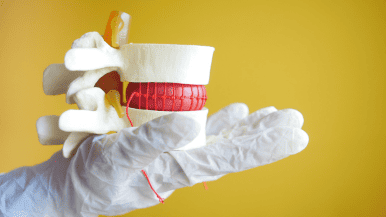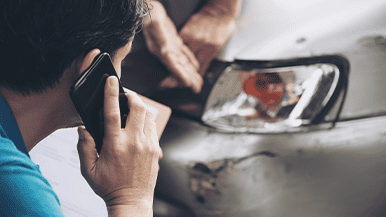 What is knee arthroscopy?
What is knee arthroscopy?- What are the benefits of arthroscopic knee surgery?
- How can arthroscopic surgery help my knee pain?
- When should I consider arthroscopic knee surgery?
The knee is the largest joint in the body, with four main structural components: bones, cartilage, ligaments, and tendons.
When something goes wrong with any of these pieces, you can usually tell right away, and the pain from an injured or worn knee can lead to long-term problems over time.
Given one in four Americans has chronic knee pain, arthroscopic knee surgery has become one of the nation’s most-performed procedures.
What is this surgery for, and what does a surgeon do during a knee arthroscopy? Let’s find out.
What Is Knee Arthroscopy?
Arthroscopic knee surgery is both diagnostic and treatment-oriented. The surgeon makes a small incision in the joint and then inserts a tiny lighted camera called an arthroscope into the knee. Those images are projected from this camera onto a screen so the doctor can diagnose and potentially treat knee problems without exposing the knee to the environment in the surgical suite.
Special tiny instruments also allow the doctor to perform surgery to repair the knee joint through a similarly small incision. The doctor can smooth any ragged knee structures, remove debris or cartilage that is inhibiting the free movement of the knee joint.
In the past, knee surgery consisted of a long cut into the kneecap that took longer to heal. Knee arthroscopy is a revolutionary procedure that uses one or more smaller incisions that are much less invasive. Today, it is one of the most frequently used surgical procedures to repair the knee and get patients back on their feet.
What Are the Benefits of Arthroscopic Knee Surgery?
Because knee arthroscopy is performed so frequently, we have plenty of data on the benefits of the procedure. This includes:
- Faster healing and recovery time for the patient
- Fewer stitches or staples to close the surgery wound
- Less blood loss during the surgery
- Less collateral damage to the tissue surrounding the repair area
- Less pain after the arthroscopic procedure
- Lower infection risk due to the smaller incisions
Knee arthroscopy is sometimes called keyhole or buttonhole surgery because the incisions are so small. This less invasive surgical procedure is quite different from traditional knee surgery, which used a much larger incision and carried a higher infection risk. Smaller incisions mean less blood loss and a lowered chance of introducing infection.
Traditional open surgery may even require the additional complexities of a blood transfusion to overcome the blood lost during the procedure. The entire arthroscopy procedure is designed to create less trauma to the joint while improving patient outcomes. This means that arthroscopic knee surgery lessens the risk of infection and complications from blood clots.
All of this translates to good news for patients—for you, if this is a procedure you’re considering. How you feel afterwards is night and day compared to traditional open surgery. You’ll have a shorter, smoother recovery and a smaller knee scar. Even better, doctors can potentially restore function to a knee that frequently locks up or feels unstable.
After arthroscopic knee surgery, you will undergo a few weeks of physical therapy and healing at home. Proper care after arthroscopic knee surgery will ensure you have a positive outcome.
How Can Arthroscopic Surgery Help My Knee Pain?
 Knee arthroscopy can restore function and alleviate pain, and it can diagnose several knee issues such as ligament damage or torn cartilage. Many of these injuries can be treated on the spot by your surgeon during the arthroscopic procedure.
Knee arthroscopy can restore function and alleviate pain, and it can diagnose several knee issues such as ligament damage or torn cartilage. Many of these injuries can be treated on the spot by your surgeon during the arthroscopic procedure.
The goal of your knee arthroscopy should be to:
- Confirm the initial diagnosis
- Fix potential joint surface fractures
- Remove any floating or loose pieces of the knee joint
- Reconstruct ligaments that are torn
- Repair cartilage damage
Chronic knee pain can be caused by acute injuries to the knee caused by trauma, overuse of the joint, or even certain conditions not even associated with overuse or an injury. The symptoms of knee problems vary according to the condition you’re experiencing, such as:
- Bruising or swelling
- Difficulty bending the knee
- Dull or sudden sharp pain
- Inability to bear weight on that leg
- Instability in the knee
- Joint hotness
- Popping or locking of the knee
If your knee injury is sudden and acute, you’ll be more likely to experience swelling, instability, and pain. This could be caused from a variety of problems, for example:
- A fractured or dislocated kneecap
- A meniscus or ligament tear
- Sprains or strains
If your knee pain is caused simply from the joint wearing out with age or from overuse, you may hear the knee start to pop and your pain may be intermittent but potentially intense. The culprit, in these cases, could be:
- Bursitis, which inflames lubricating sacs (bursae) in the knee that keep it moving smoothly
- Plica syndrome caused by a thickening of your knee ligaments
- Tendinosis or tendinitis, which are tiny tears or inflammation in the tendons
There are also knee conditions such as osteoarthritis, which can degenerate the joint. While arthroscopic knee surgery cannot eliminate arthritis in the knee, it may relieve painful symptoms of many problems that damage the cartilage surfaces and other soft tissues surrounding the joint
When Should I Consider Arthroscopic Knee Surgery?
You might be a candidate for knee arthroscopy if you are suffering from:
- A loss of motion in the knee so severe you can’t extend or bend it
- Chronic pain not alleviated by non-surgical approaches
- Problems twisting, turning, or squatting
- The inability to bear weight on the bad knee
All surgeries carry risk, even minimally invasive ones, so your doctor may try physical therapy or exercise, weight loss, icing and elevation of the knee, and anti-inflammatory medications first. Not everyone is a candidate for arthroscopic knee surgery.
At Advanced Orthopedic Centers, we work closely with you to ensure you receive the proper treatment at exactly the right time. Can help you regain mobility and retain your health after chronic knee pain. Contact us today for more information.



